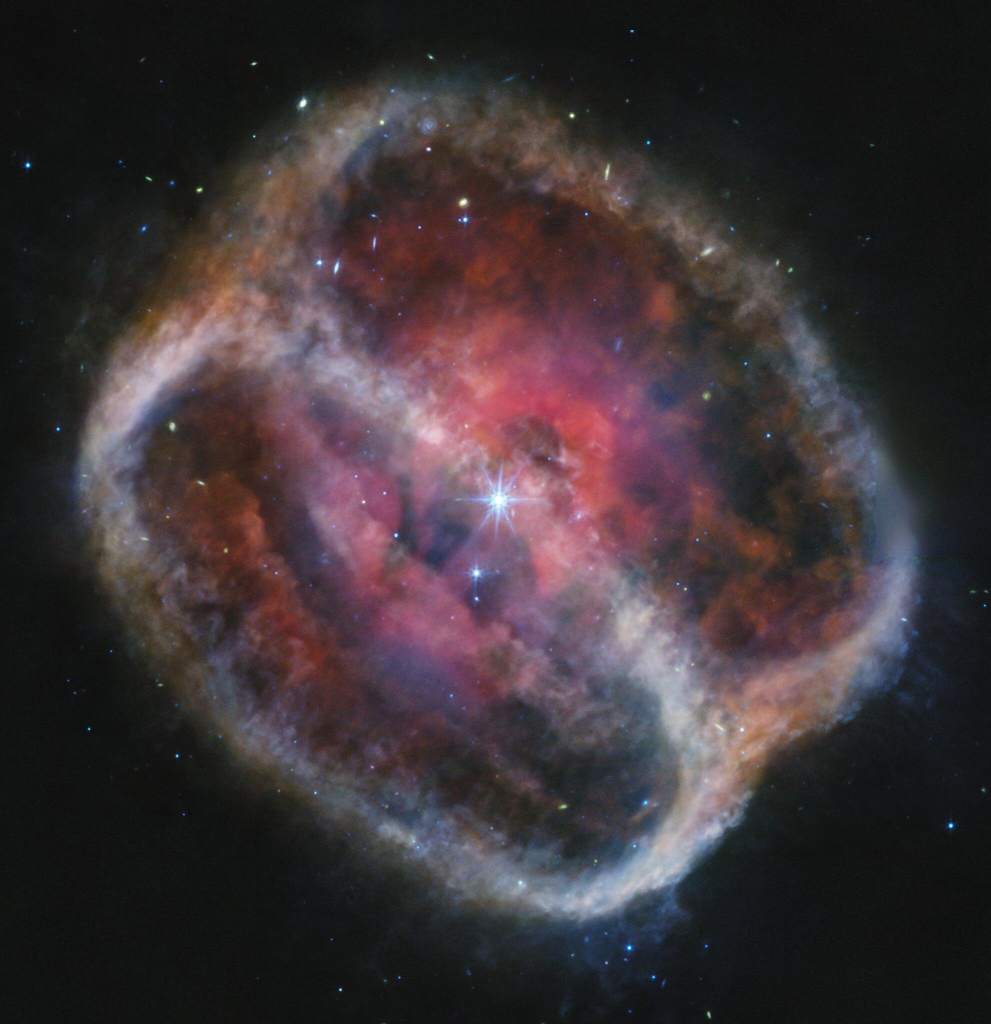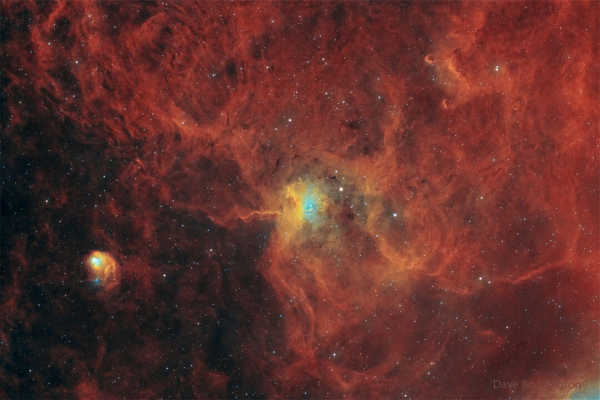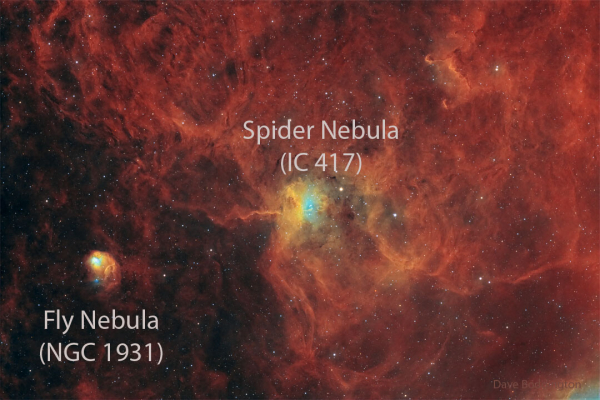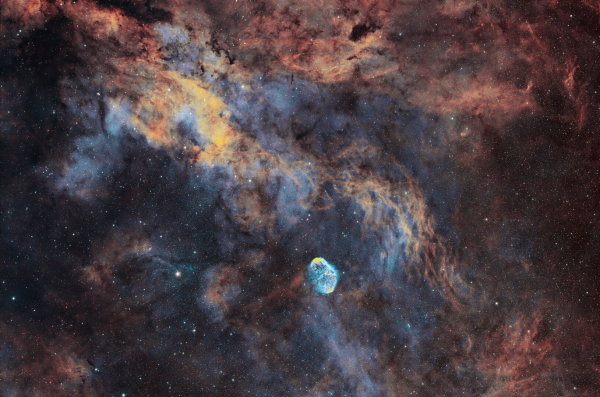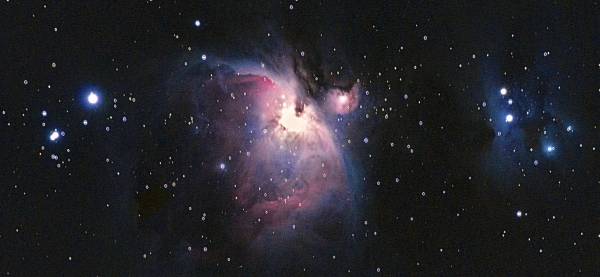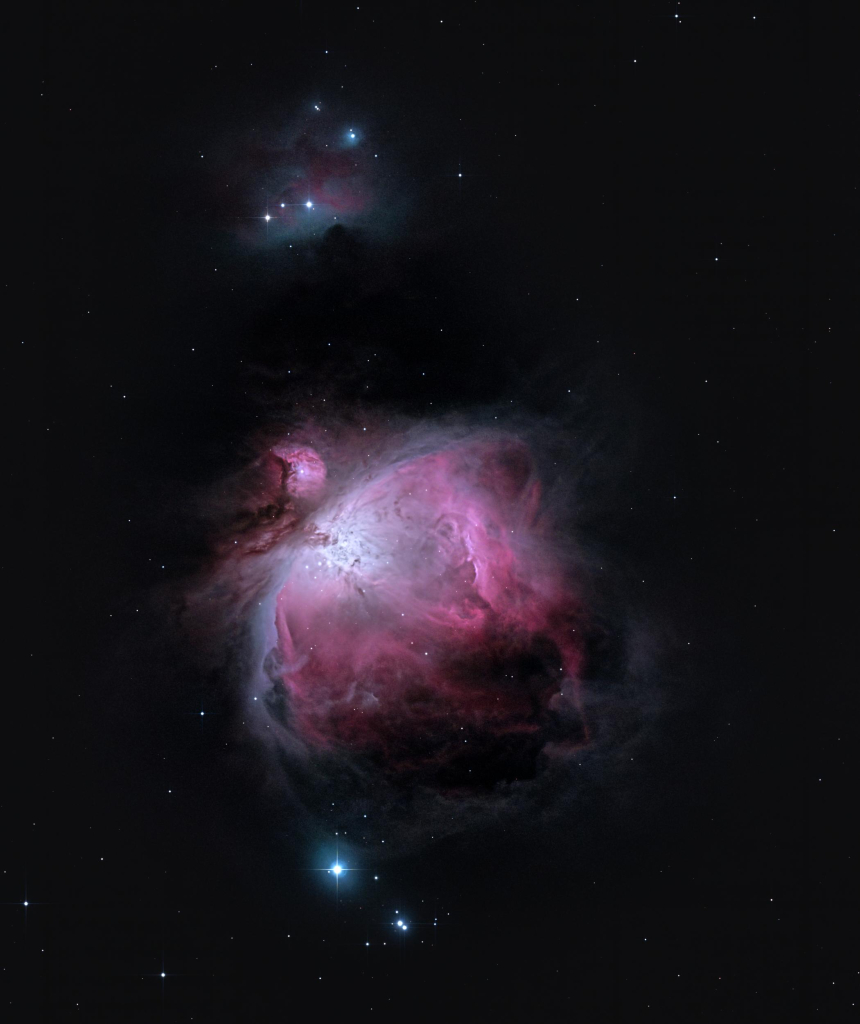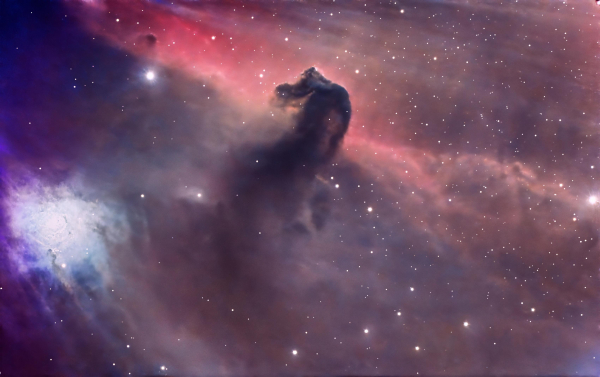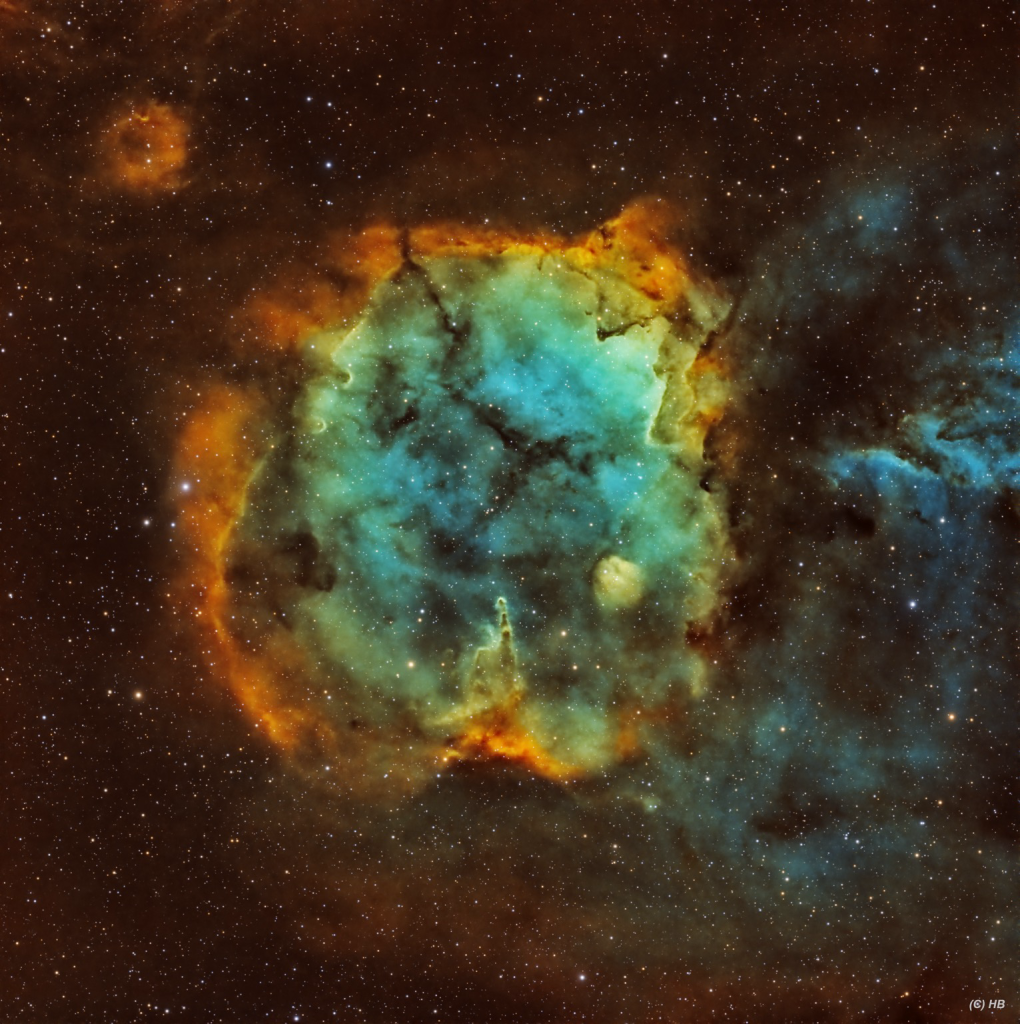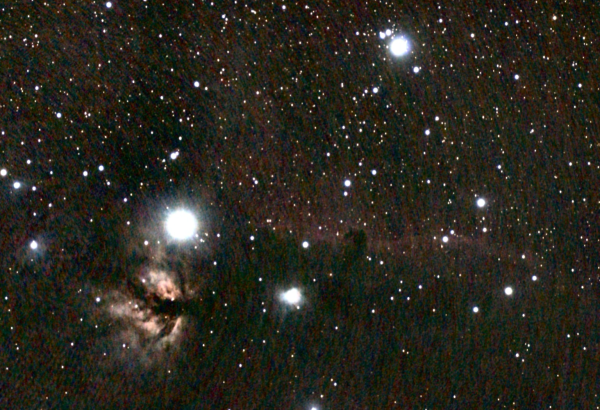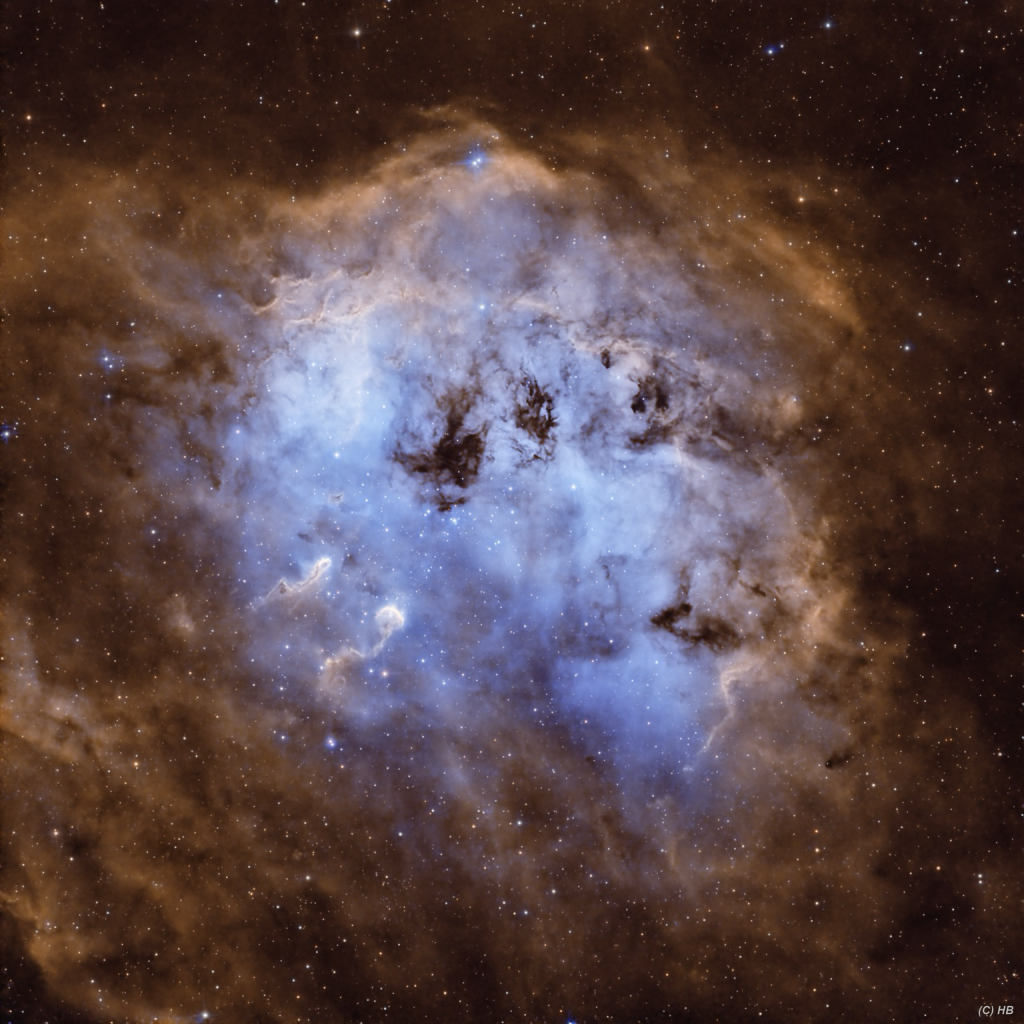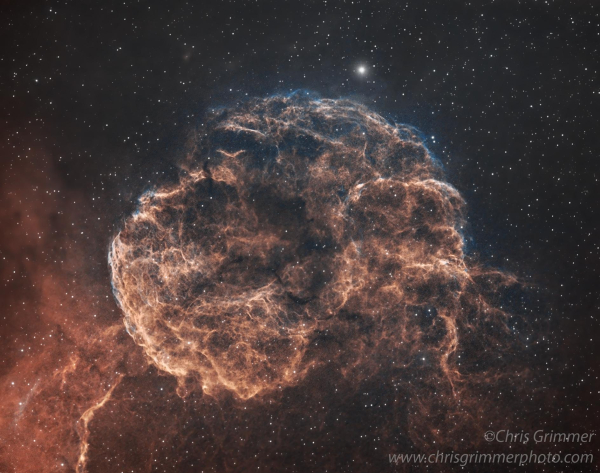Suche
Beiträge, die mit nebula getaggt sind
Meet the planetary #nebula NGC 1514, aka the "Crystal Ball Nebula". It's about 1500 light years away from Earth in the direction of the constellation Taurus.
Planetary nebulae occur toward the end of the lives of #stars that have about the mass of the Sun. They shed their outer layers into space, leaving behind an Earth-sized star called a white dwarf. Its temperature can be up to about 100,000 degrees, so it emits a lot of ultraviolet and X-ray light. That light energizes the gas ejected during the earlier phase, lighting it up like a neon sign. (NGC 1514's white dwarf is the bright star at the center with the spikes, which are an artifact of the telescope's optics.)
This image is a composite of individual frames made through three colored filters by the Webb telescope's Mid-Infrared Instrument (MIRI). The image shows two concentric shells of material whose bright edges appear as circles. It's actually an hourglass-shaped structure seen an angle inclined to our line of sight toward NGC 1514.
A newly published study finds that these rings are different than the reddish material inside them. The light they emit comes from very tiny grains of carbon-rich material given off by the progenitor star very late in its life.
But why the ring shapes? It turns out that the progenitor star was actually two, only one of which endured this phase of high mass loss. Energetic "winds" given off by the stellar pair shaped the carbon grains as they were pushed away from the system.
(Processing of this image was done by Judy Schmidt: https://www.flickr.com/photos/geckzilla/54206737999)
#Astronomy
NGC 1514 Infrared
Data from Proposal 1238: Sparse Spectral Mapping of NGC 1514 (pdf link because I have been unable to find html equivalents for JWST proposals) Principal Investigator Dr. Michael E.Flickr
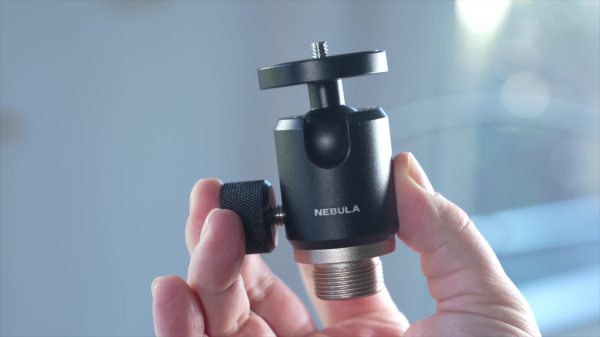
Nebula Floor Stand: Originelles Stativ für Beamer im Test
Beim Nebula Floor Stand handelt es sich um ein Stativ für eine Vielzahl von Projektoren. Der Projektor lässt sich damit auf einer Höhe von 50 oder 100 Zentimetern aufstellen.Christian Kahle (WinFuture.de)
The Spider and the Fly
In the constellation Auriga, emission nebulas IC 417 (Spider) and NGC 1931 (Fly), both about 10,000 light-years away, house young star clusters. The deep image from Berkshire UK reveals these cosmic clouds with the Fly spanning 10 light-years.
HD image at https://apod.nasa.gov/apod/ap250211.html#space #astronomy #nebula #universe
APOD: 2025 February 11 – The Spider and the Fly
A different astronomy and space science related image is featured each day, along with a brief explanation.apod.nasa.gov
#astrophotography #astronomy #space #nightsky #nightphotography #photography #outdoors #stars #nebula #nebulae #galaxy #Astrodon
Technical details at https://telescopius.com/pictures/view/151612/deep_sky/ngc-6888/by-drgfreeman
#astrophotography #astronomy #nebula #deepsky #photography #astroberry #kstars #ekos #phd2 #raspberrypi #astrodon
Astrophotography by DrGFreeman
First night that I can stay outside the whole night of this year!Telescopius
Setup: #skywatcher SA2i, #Samyang 135 @f/2.8, #Canon 1200D, #siril, #gimp
Flickr link with all details (description of the photo, astrometry, material and methods) : https://flic.kr/p/2qrZ76N
#nebula #deepsky #astro #astronomy #astronomyart #astrophoto
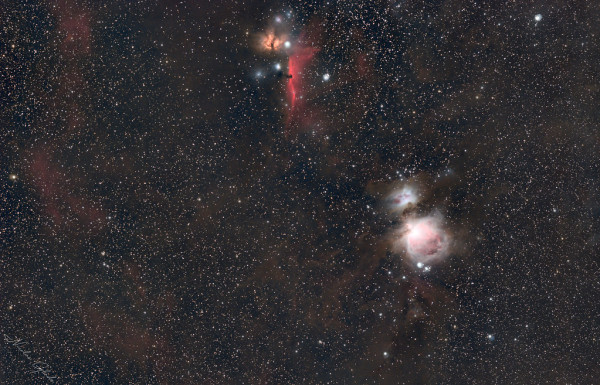
Orion nebulae (M42, IC 434 et NGC 2024)
Est-il encore nécessaire de présenter la grande nébuleuse d'Orion qui reprend ses visites hivernales ? Sur cette photo, j'ai capturé la grande nébuleuse d'Orion SH 2-281 et la nébuleuse de l'homme qui cours SH 2-279 qui lui est adjointe au dessus, a…Flickr
250mm, f5, 462 exposures of 10’’.
#telescope #telescopes #zwo #zwoasi #zwoseestar #zwoseestars50 #seestar #seestars50 #astro #astrophoto #astrophotos #astrophotography #astrophotographer #spacephotography #astronomy #spaceexploration #nasa #universe #space #deepsky #deepspace #nebula #orion #orionnebula #m42 #messier42 #messier
Celestron NexStar Evolution 6 + ZWO ASI585MC Pro.
945mm, f6.3, 130 exposures of 60’’.
#telescope #telescopes #celestron #celestrontelescope #celestronnexstar #nexstarevolution #nexstarevolution6 #zwo #zwoasi #zwoasi585mc #astro #astrophoto #astrophotos #astrophotography #astrophotographer #spacephotography #astronomy #spaceexploration #nasa #universe #space #deepsky #deepspace #nebula #horsehead #horseheadnebula #b33 #barnard33 #ic434 #ngc2023
Setup: #skywatcher SA2i, #Samyang 135 @f/2.8, #Canon 1200D, #siril, #gimp
Flickr link with all details (description of the photo, astrometry, material and methods) : https://flic.kr/p/2qjFvZN
#nebula #deepsky #astro #astronomy #astronomyart #astrophoto

Nébuleuses de la Trompe d'éléphant et du Lion (RGB)
EDIT [FR] : il s'agit là de la partie RGB de la photo déjà présentée en mai. La description ci-dessous est identique mais il faut y retrancher toute la partie HOO.Flickr
#astrophotography #astronomy #space #nightsky #milkyway #nightphotography #photography #outdoors #stars #nebula #nebulae #Astrodon
Celestron NexStar Evolution 6 + ZWO ASI585MC Pro + HyperStar.
300mm, f2, 120 exposures of 60’’.
#telescope #telescopes #celestron #celestrontelescope #celestronnexstar #nexstarevolution #nexstarevolution6 #zwo #zwoasi #zwoasi585mc #astro #astrophoto #astrophotos #astrophotography #astrophotographer #spacephotography #astronomy #spaceexploration #nasa #universe #space #deepsky #deepspace #nebula #horsehead #horseheadnebula #b33 #barnard33 #ic434 #ngc2023
Shot for a total of about 14 hours from my observatory on a rooftop in Mexico City.
#astrophotography #astronomy #space #nightsky #nightphotography #photography #outdoors #stars #nebula #nebulae #Astrodon
